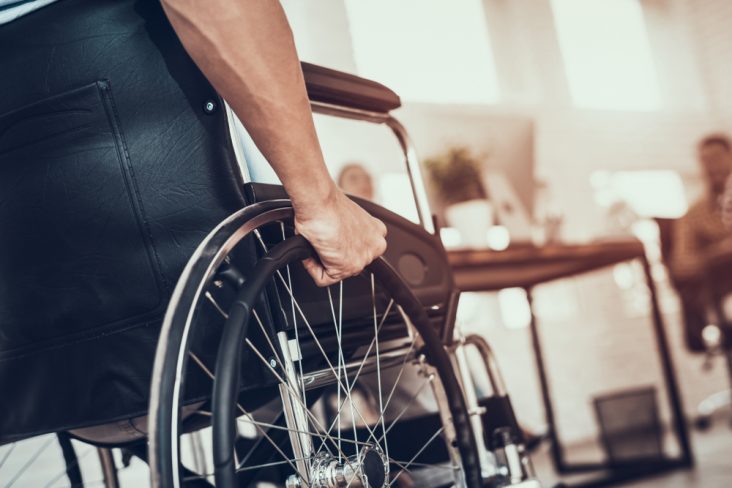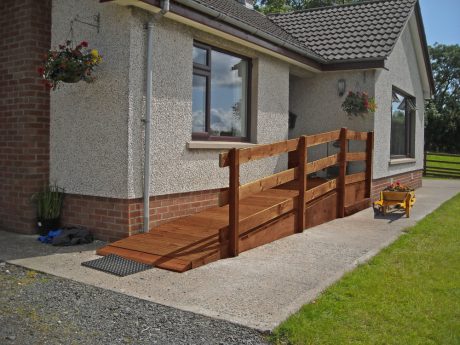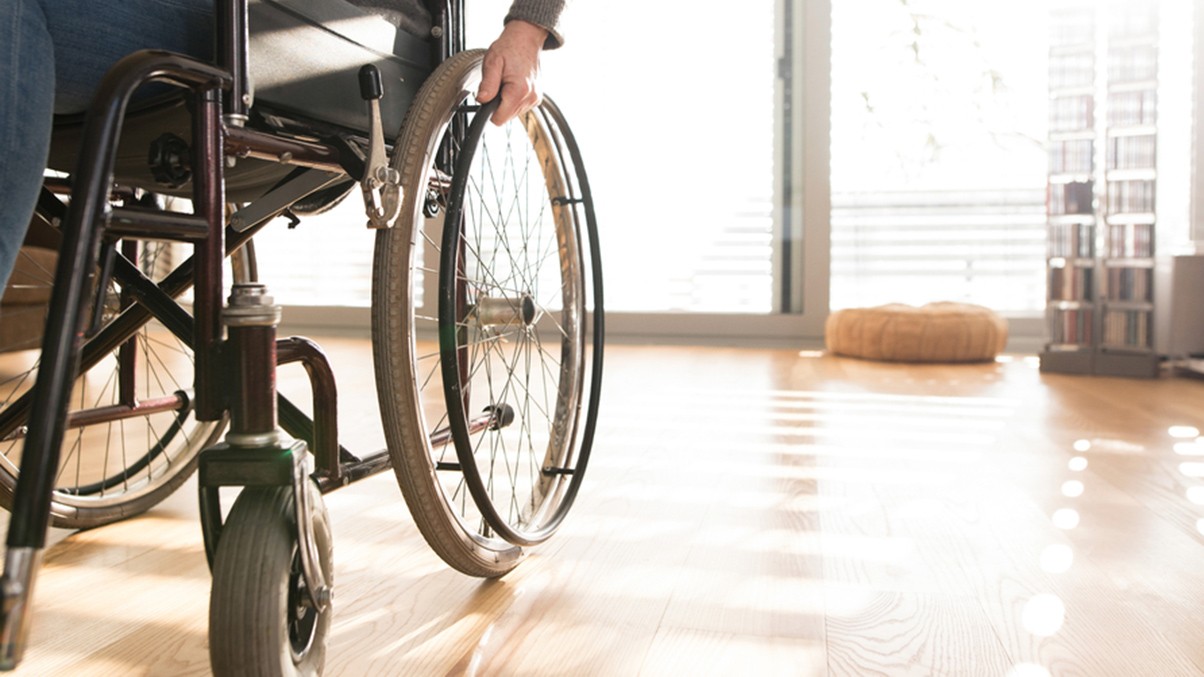In recent years, claimants with spinal injuries (and other life-changing injuries) have faced significant headwinds in both sourcing and funding accommodation able to meet their needs.
In this article, first published in the March 2025 edition of PI Focus, partner Hugh Johnson and senior paralegal Annabelle Davies look at the challenges of meeting a claimant’s accommodation needs during the litigation process.
Discharge planning and the return home
A recent study of NHS data estimates 4,400 new spinal injuries happen each year, or one every two hours. As a result, there are fundamental challenges in giving patients early access to hospital rehabilitation in the 12 specialist centres serving the UK and Republic of Ireland. That often means patients will be discharged before suitable long-term accommodation arrangements can be made.
By the time of discharge from a specialist rehabilitation unit, which may be six months or more following injury, most claimants will have obtained legal advice or have at least begun considering that option. In some personal injury claims, the circumstances may have already led to early liability admissions (eg a passenger injured in a single vehicle road traffic collision). Even if not, early discussions can be commenced with a view to putting in place early rehabilitation under the Rehabilitation Code. That will rarely be the case with clinical negligence claims, which involve the challenge of bringing a professional negligence claim and working with a state indemnifier rather than a commercial insurer.
At this point, claimants usually face a new challenge. A specialist spinal unit is a forgiving, fully accessible, step-free environment with a supportive community. Returning to pre-injury accommodation may not always be possible and, in most cases, will immediately give rise to difficulties.
Most claimants will have two-level accommodation, rendering much of the home inaccessible. There is likely to be stepped access. Claimants living in flats above the ground floor may be isolated when lifts fail and will be at risk in the event of a fire. Existing furniture may need to be removed to provide for wheelchair circulation space, which assumes door frames will be wide enough. If doors are removed to facilitate access cheaply and easily, that results in a loss of privacy. The average two-storey home is unlikely to be large enough for scope to convert a downstairs room to a bedroom without significant compromise to the rest of the house. Assuming there is one, the downstairs toilet will generally be too small to convert to a wet room.
The claimant is not the only person coming to terms with their injury. Changes to the home environment affect any partner or family members.
Most practitioners in the field will have experience working with claimants forced to live, at least for a period, in unsuitable circumstances. In the worst cases, the claimant will be living in what is sometimes referred to by occupational therapists as a “micro-environment”. In that scenario, the claimant may have access to only one room. While providing care in such circumstances is possible, there are significant compromises. The impact on the claimant’s well-being cannot be understated, particularly if they need to have all their care and toileting needs attended to in bed. It is incumbent upon the solicitor to provide support and actively seek solutions from the earliest stages possible.
A review of average litigation timescales only serves to highlight the issue. For example, looking at NHS Resolution data for all claims exceeding £1m at the point of settlement in 2023/24, claims against hospital trusts are averaging between five and seven years to conclude. Claimants simply cannot be expected to wait that long to secure suitable accommodation.
Disabled Facilities Grant
Claimants may be assisted by a Disabled Facilities Grant (DFG) to support adaptations to the family home where a move is not yet possible. This assumes, however, that the floorplan of the existing home will support that. Each adaptation is different but often includes a wet room conversion and ramps and may extend to installing a temporary modular structure or “pod”. Such adaptations are unlikely to be sufficient enough to be much more than a stop-gap, not least because much of the home may still be inaccessible.
The limitation with a DFG is that the funds available will rarely exceed £30,000, will usually require the claimant to reside in the home for at least five years and are means tested. Some spinal injured claimants will fail to qualify for a DFG and instead must use savings to fund adaptations at a time of peak uncertainty regarding their health and care needs, all while being unable to work. That situation is not eased by knowing that such adaptations might be a temporary solution.
Progressing the litigation and the first interim payment
An early, substantial interim payment is the best way to begin addressing accommodation needs. In clinical negligence claims, interim funds are generally available later than in personal injury claims.
If the claimant’s accommodation is poor, this is likely to provide a physical barrier to the care required. There may not be room for a team of carers or a sleep/night carer in compact accommodation. If so, with a lesser provision of care, the claimant will find themselves doing less and accessing the community infrequently. That is not only harmful to the claimant but may also be detrimental to the value of the claim. There is unlikely to be a dedicated therapy space, which will prevent equipment from being tested or purchased. A move to an alternate property as soon as possible not only meets an immediate need but will provide evidential support in the claim. The claimant will benefit from the property and enhanced care and therapies and be better able to reflect in their witness evidence on the impact it has made.
Where liability is denied, it is likely to be desirable in many cases for there to be a preliminary issues trial to avoid substantial litigation expenditure and the imposition on the claimant of multiple assessments, all of which may be unnecessary. In turn, at the point of a liability compromise, one or both parties may not have comprehensive accommodation expert evidence in place. It follows that at the point at which a first interim payment is made, there may be insufficient additional evidence to support an application to the court and an evaluation by the court at the first stage of the Eeles test. It may be better to ensure the evidence required is comprehensive and secure a rental in the interim. The judgment in XS1 highlights some of the difficulties when making an application where there is incomplete information before the court and, as will sometimes be the case, where there has been a liability compromise below full value.

Searching for property
With a need to move immediately and ongoing uncertainties as to how long it may take to source a property to purchase, let alone a clear understanding of what equipment and care needs may be for the remainder of one’s life, claimants will often seek to secure a suitable rental property. Moving to a more suitable property, such as a bungalow, will immediately address many of the claimant’s day-to-day challenges.
While remote searches of sites such as Rightmove and Zoopla are easily undertaken, there will rarely be adequate photographs and floorplans for the purposes of a disability architect. Site inspections will likely be required for all viable options since there is a need to ‘get it right’ for any purchased property. Rental accommodation capable of meeting the needs of a spinal injured client remains vanishingly rare.
The property need cannot be considered in isolation; wider factors will need to be considered, too. If the property search needs to be extended to adjacent towns within the same region, boundary changes are possible. That may affect a number of services, but in particular, school catchment areas and healthcare provision. A claimant will need to be newly reassessed for NHS Continuing Healthcare (CHC funding) if moving to an area served by a different integrated care board (ICB). That may risk funding being withdrawn. Such risks must be addressed carefully with support from the care and case management team, as contingency funding arrangements may need to be put in place.
Rental property
In theory, securing a rental should be quicker than identifying a property to purchase and adapting it. As the claimant is not seeking to remain there permanently, it will be easier to compromise on location or room sizes, for example. Nevertheless, it would be wrong to suggest that searching for a suitable rental will always be quick or straightforward. With that in mind, the search for a rental property should usually be undertaken as soon as it becomes clear that funds are likely to be made available. As with a purchase, that search will be assisted by a professional who can liaise with local agents before properties are listed. Critically, negotiations around adaptation works will need to progress once a property has been identified.
Although adaptations in a rental property are likely to be kept to a minimum, installing a ceiling track hoist, ramps, wider door frames and a wet room are all likely to be essential. Many landlords are unwilling to permit those works to an asset in their property portfolio.
Given the paucity of options, claimant solicitors will invariably have to act quickly to support the property team and provide proof of funds for the landlord. Liaison with the property expert instructed in the litigation will be essential to ensure that the anticipated rental costs are supported/within a reasonable range.
Property purchase
There will always be uncertainty regarding the precise award that the court may make in connection with the damages award, but the approach to quantification is now set. Swift v Carpenter finally brought to an end a period of uncertainty associated with the property element of personal injury awards and has led to larger awards for claimants with mid to long life expectancies. Adaptation costs also appear to have stabilised after a period of cost increases following Brexit and the Covid-19 pandemic. There has, however, been a recent challenge for claimants with ‘live’ cases at an advanced stage. Many unavoidably saw substantial reductions to their claim as a result of the personal injury discount rate (PIDR) adjustment to +0.5%.
The search for a property to purchase will be similar to the rental search described above. However, the claimant may be unwilling to make the same compromises when buying a permanent home. In addition, there will be wider considerations with regard to timing. In many cases, defendants will be unwilling to provide interim payments of sufficient size, such that a contested application for interim funds is necessary. Should that be the case, both claimant and defendant parties will likely need to have obtained sufficient evidence of their own (or have the opportunity to do so). An application for interim funds to purchase a property should generally be signposted long before it is made. The court will also need to be satisfied there is a need for a property to be secured before the conclusion of the litigation.
The purchase process can be fraught. Even where an offer is accepted, most practitioners will have experience of a property being lost while vendors become impatient with the litigation. Chain-free sales (for example, a sale by an executor) invariably involve less urgency for the transaction to complete. Communication is key, but if an application is prepared late in the day and filed well after an offer is made, many vendors will simply be unwilling to wait several weeks for the hearing return date.
Needless to say, the adaptation works on a purchase will likely be more extensive and will frequently require planning permission. The process from search to moving in will usually take a year or more once conveyancing, planning, project management, tenders and the completion of the adaptation works are taken into account.
Conclusions
There are many challenges to sourcing an appropriate property mid-claim. Planning well in advance, where possible, may smooth what can often be a difficult process.
A significant amount of work will be required to secure a purchase or rental property. There will also need to be good communication between the architects and occupational therapists regarding the adaptations. Following Hadley v Przybylo, this work is properly recoverable as it is an essential adjunct to the litigation and is associated with ensuring that the claimant’s rehabilitation needs are met, albeit recoverability is not without limits.
If managed correctly, the claimant will be assisted into better, more suitable accommodation and may be better placed to recover damages for their current and future needs.
Find out more
You can find further information regarding our expertise, experience and team on our Medical Negligence page.
If you require assistance from our team, please contact us.






